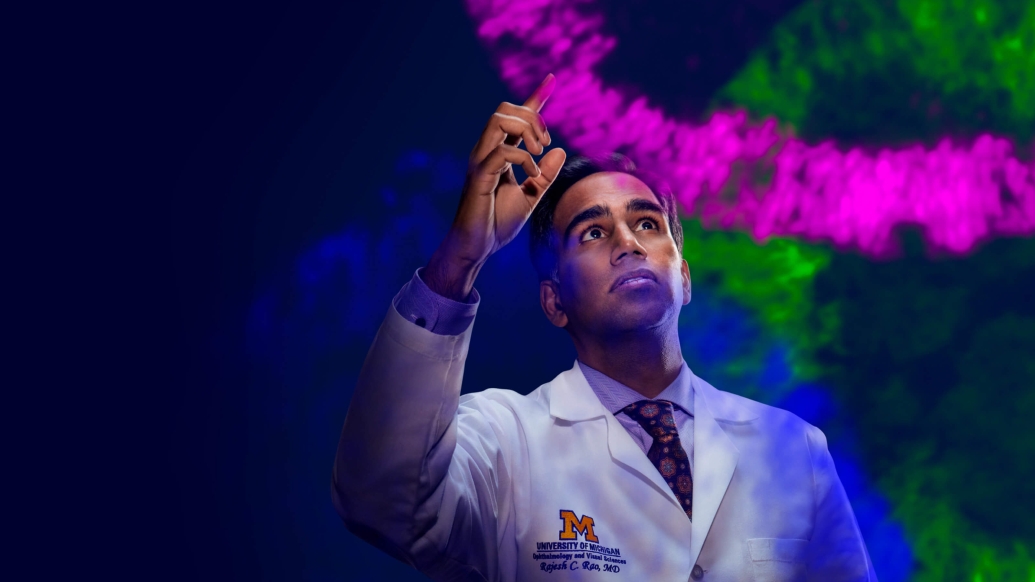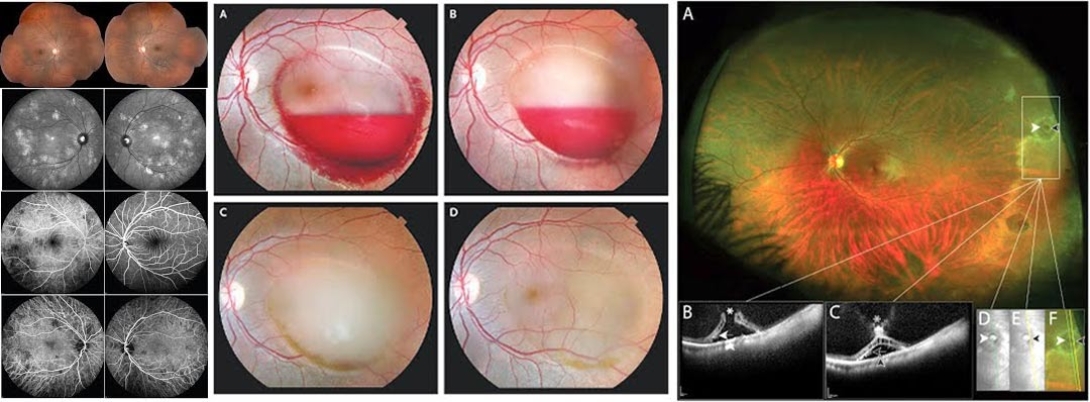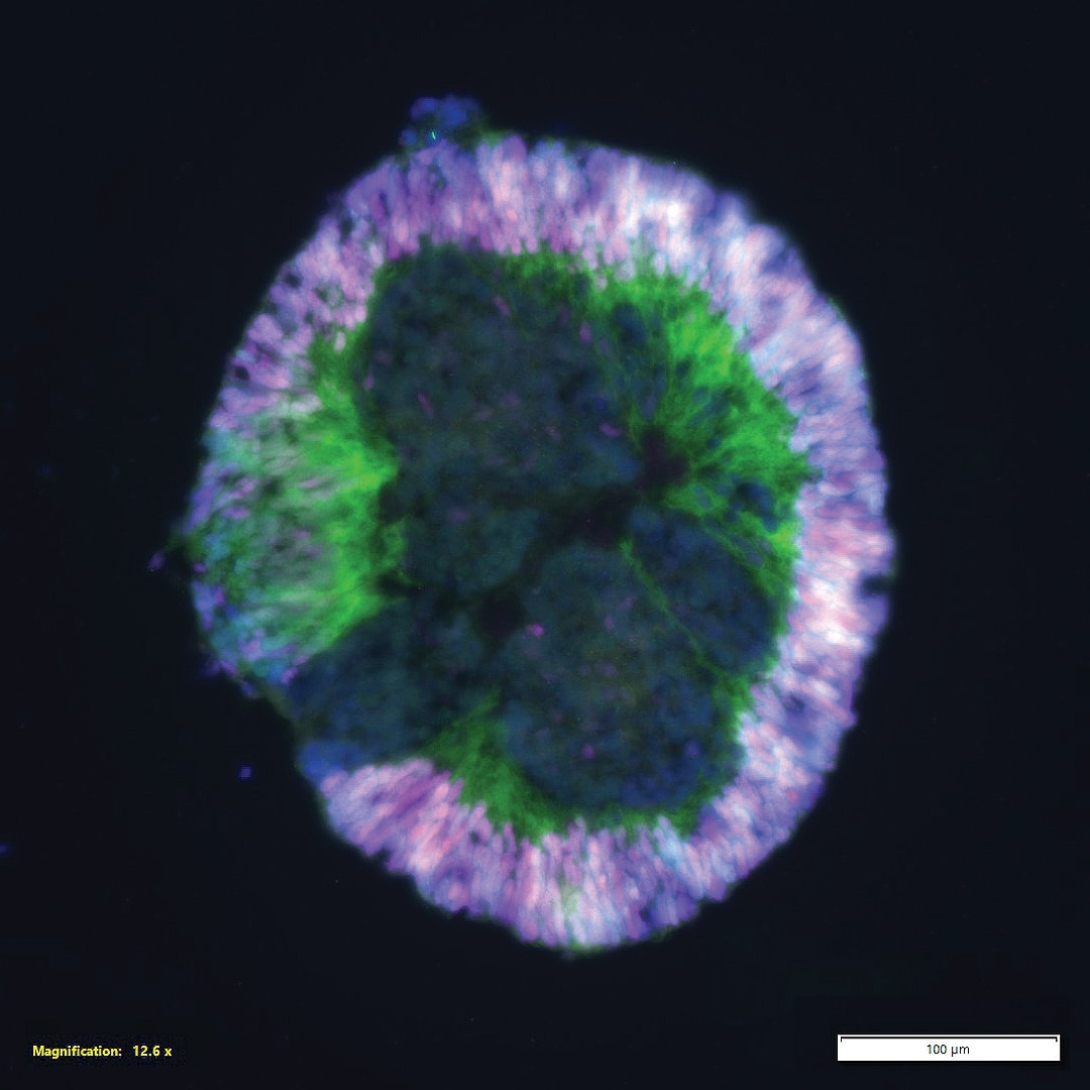
There’s a disease that’s as common as all cancers combined that steals a person’s vision. It’s a disease that is predicted to double the amount of people it affects by 2050.
And most people have never heard of it.
“Age-related macular degeneration is such a devastating disease for so many reasons,” says Rajesh Rao, M.D., an ophthalmologist at University of Michigan Health Kellogg Eye Center and assistant professor at University of Michigan Medical School. “Not only can it rob someone of their sight, but also their independence. Which is why, in my lifetime, I greatly hope to see more effective treatments to save or restore vision.”
In my lifetime, I greatly hope to see more effective treatments to save or restore vision.
Age-related macular degeneration, or AMD, damages the macula – the part of the eye that allows you to see detail, colors, and have sharp vision straight ahead of you. Symptoms may start with mild blurriness or trouble seeing in low light, and often progress from there. It’s the leading cause of vision loss in people over 60, and while it’s not fatal, it can rob you of the ability to see faces, drive, read, cook and enjoy many hobbies. Colors become dim. Straight lines become wavy. The world loses its sharpness, or parts of it may be missing entirely due to a gray or dark spot in the middle of your vision.
Scientists have identified some ways that may slow it down, but there is no cure.
And the disease is on the rise worldwide.
From the age of 17, as an undergraduate, Rao has worked in stem cell research. Decades later, now a surgeon-scientist at one of the top ten eye hospitals in the nation, Rao found himself asking whether patients with AMD could benefit from the leading-edge field of regenerative medicine.
“I’ve always been interested in the science of epigenetics, which is how the environment and other factors affect our gene expression,” says Rao. “What causes genes to turn on and off, to become certain cell types lost in disease? How are these genes controlled? And, more specifically, can stem cells regenerate or replace lost retinal cells, and slow vision loss or restore lost function for someone? If we can answer those questions and restore retinal tissue, that would be a holy grail of treating macular degeneration.

Rao and his team are on their way to their goal of finding out. With an established record of successful eye-related clinical trials at U-M Health, Kellogg Eye Center is conducting a groundbreaking first-in-human trial, led by Dr. Rao, with the goal of using an adult stem cell-based approach to restore vision.

“Our study is the first time this particular type of stem cell has been used in people with dry age-related macular degeneration,” explained Rao. Instead of human pluripotent stem cells, the study uses retinal pigment epithelium (RPE) stem cells from adult human eyes – the life-giving result of tissue donated to eye banks. The trial is based on technology that got its start in the labs of Sally Temple, Ph.D., and Jeffrey Stern, M.D, Ph.D., both adjunct faculty in the Department of Ophthalmology & Visual Sciences at U-M, and who lead the Neural Stem Cell Institute in Rensselaer, New York.
Rao and his team transplant thousands of these cells under the macula of patients who participate in the NIH and biotech company Luxa co-sponsored study. The first patients who have received transplants are legally blind, and as the trial progresses, individuals with advanced AMD with better levels of vision will be enrolled.
“Now, we begin close evaluation of our patients to evaluate the treatment’s safety and, as a secondary goal in this early phase clinical trial, we try to detect any early signals that suggest an improvement in vision,” Rao explains. “But as the first trial of its kind, using RPE derived from adult RPE stem cells, for the treatment of a retinal disease, we are hopeful about what the findings could ultimately mean for patients with AMD.
We are hopeful about what the findings could ultimately mean for patients with AMD. Rajesh Rao, M.D.
As for the future of cell regenerative therapies for treating the countless eye diseases that patients suffer from worldwide, Rao and his team are confident that Michigan Medicine will play a role in breakthrough care.
“This trial is a lifelong dream for me,” says Rao. “And I can’t think of a better place to be part of it than Michigan Medicine.”

Discover the power of a Michigan Answer through inspiring stories. Find hope and inspiration for your own journey by reading more.





